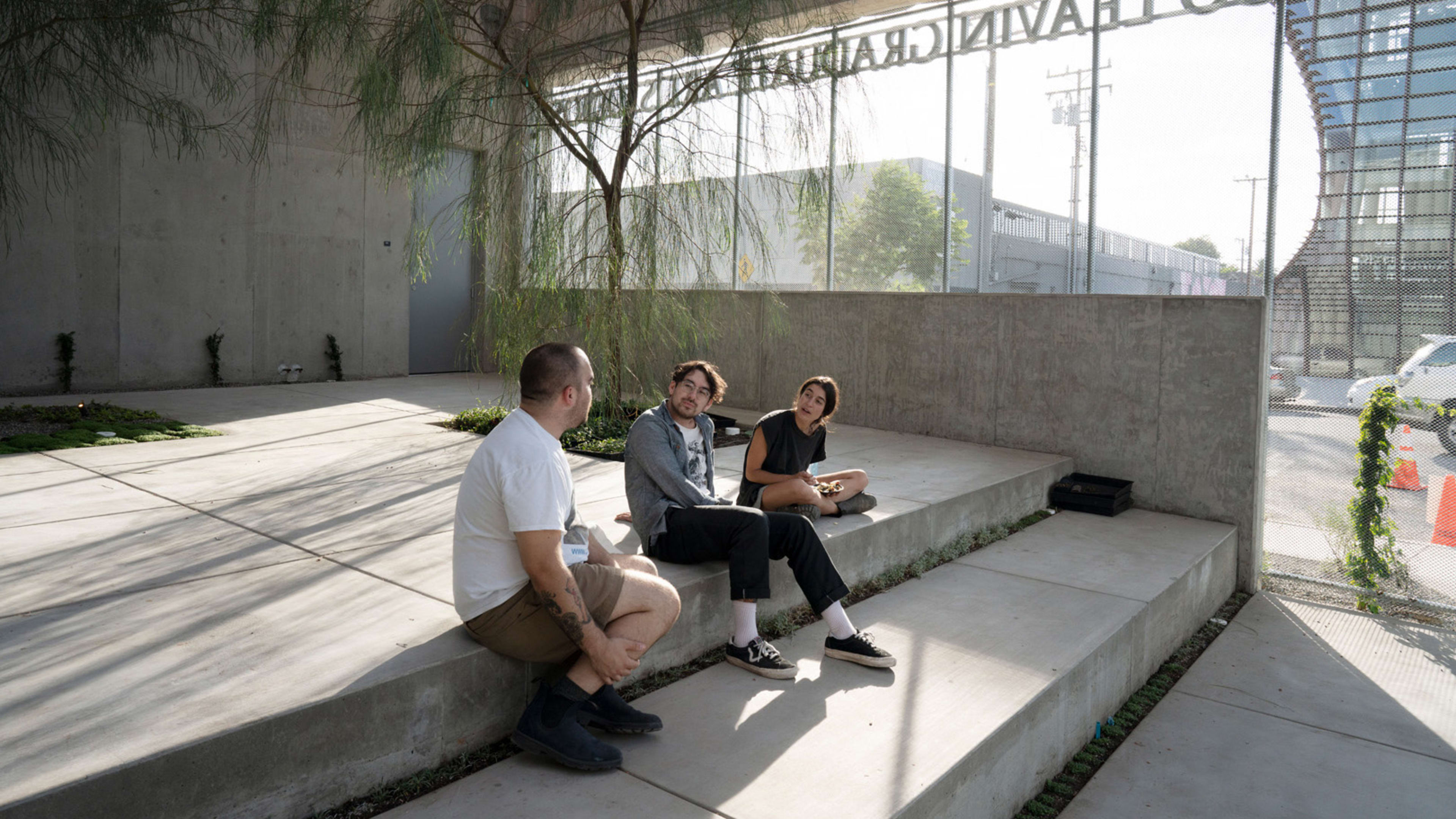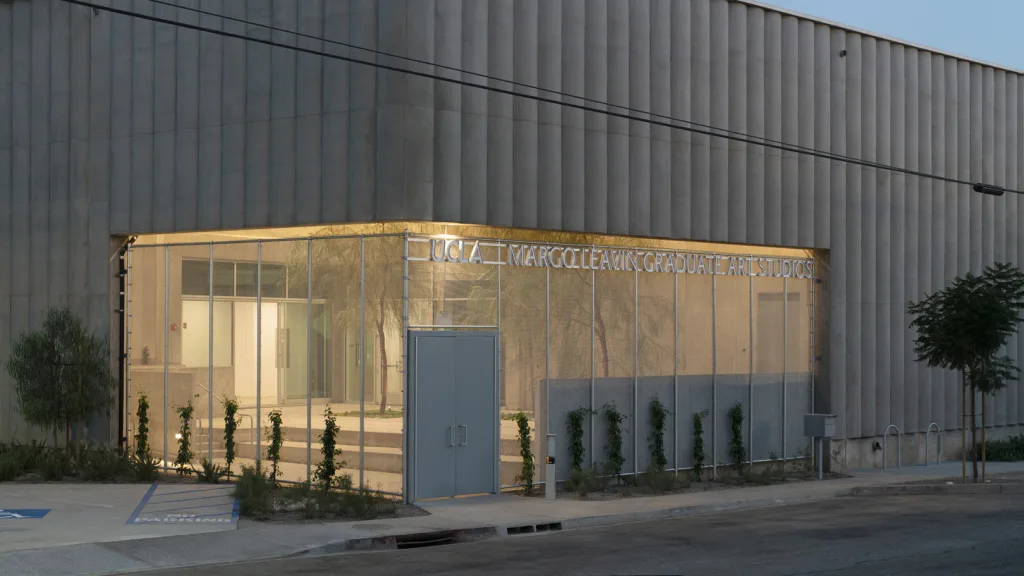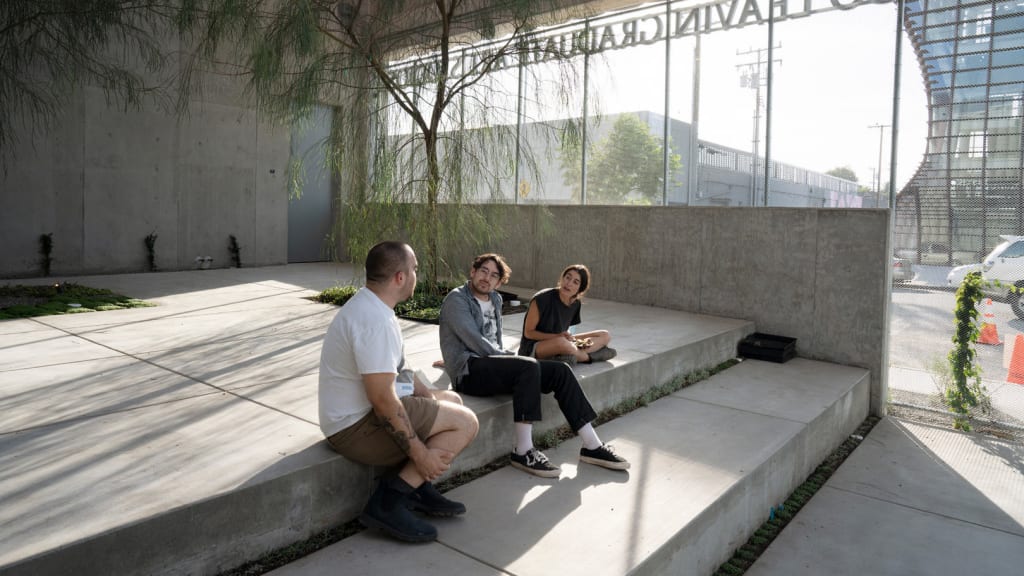Galleries and museums are usually heavily climatized and high-tech, which is no surprise, since the art inside is sensitive. But UCLA’s new art studios take an innovative passive approach to climate control that could hold lessons for other architects.
In Culver City, an industrial stretch of Los Angeles, a vintage, 21,200 square-foot wallpaper factory has been updated to house UCLA’s Margo Leavin Graduate Art Studios, a multipurpose gallery and classroom space for art, architecture, and design students. The graduate art program’s studios have existed in the Hayden Tract area of Culver City since 1986; this renovation of the space, unveiled this week, marks the expansion of the old building into a 48,000 square-foot campus.

The facility features a “neighborhood” of 42 graduate studios, computer, ceramic, and print labs, and a studio apartment loft for the program’s artist-in-residence. In line with the program’s focus on art and creativity, the campus is designed for use by artists of different disciplines and modus operandi. Private studio spaces are adjacent to communal shared spaces for exhibition and critique. Designed by Los Angeles-based architecture firm Johnston Marklee and led by architect Sharon Johnston, the updated campus is prepared to receive graduate students as the fall quarter begins, where prominent female faculty members like conceptual artist Barbara Kruger and photographer Catherine Opie will hold classes.
The building’s unique approach to sustainability is aimed at achieving LEED Gold. As the architects put it in a statement, the goal is to regulate the building more passively, instead of using tech: “innovative building systems and elemental materials are distilled towards a holistic and efficient structure rather than adding layers of sustainable technology.”
The architects replaced the old building’s exterior structure with thick concrete walls, using “tilt up” construction commonly found on industrial projects. These concrete walls “eliminate the need for waterproofing and insulation, and minimize the construction footprint and waste,” the architects say in a statement. They enwrap a series of semi-indoor courtyards; these open-air workspaces and gardens—one of which is marked by ornamental acacia trees—exist outside, but within the protection of the structure.

The new studio campus was funded by a $20 million gift from gallerist Margo Leavin in 2016, the largest made by an alumna. “I’m grateful that my career in the Los Angeles art world has afforded me the opportunity to support those at the very heart of this community: artists,” Leavin said in a statement. “The students, alumni, and faculty from the art department at UCLA shape the future of the arts in Los Angeles and beyond. It would be my wish that others who are passionate about the future of the arts—especially other women who have enjoyed professional success—will join me in harnessing their resources to benefit those who are still developing their creative practices. We need to remember that without artists, there would be no art world.”
Recognize your brand’s excellence by applying to this year’s Brands That Matter Awards before the early-rate deadline, May 3.








